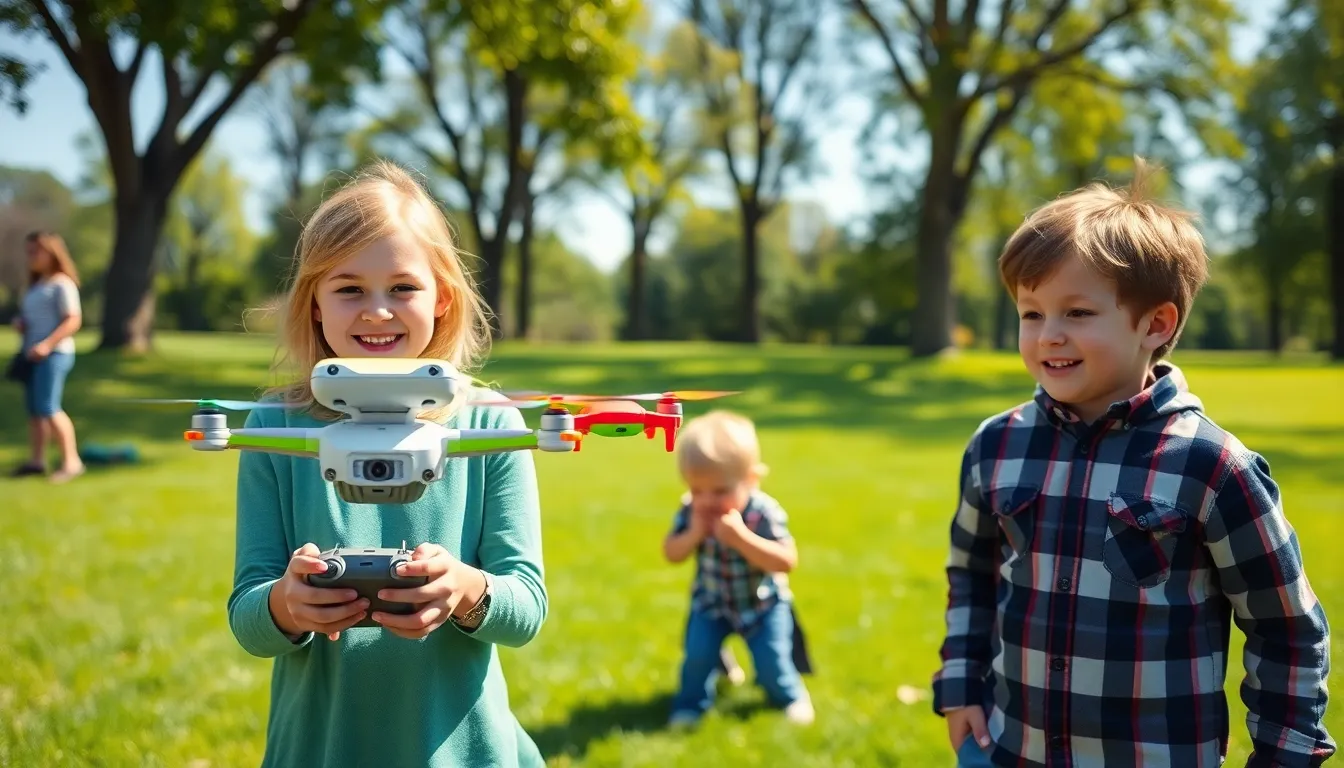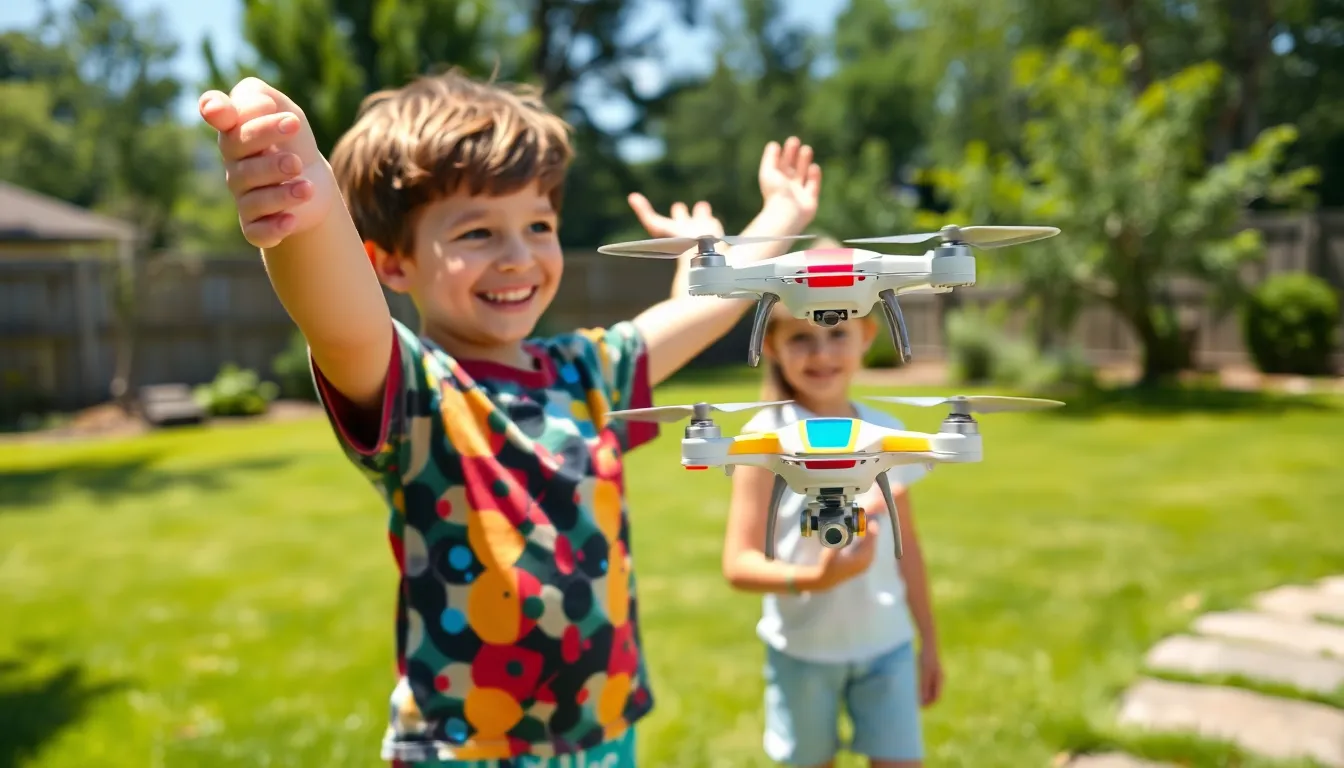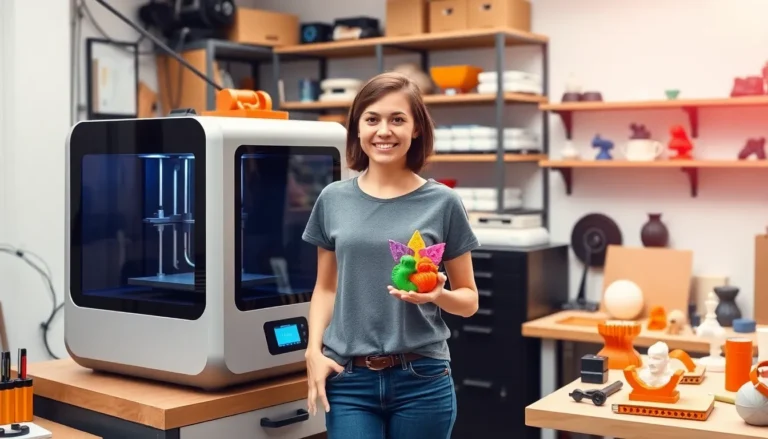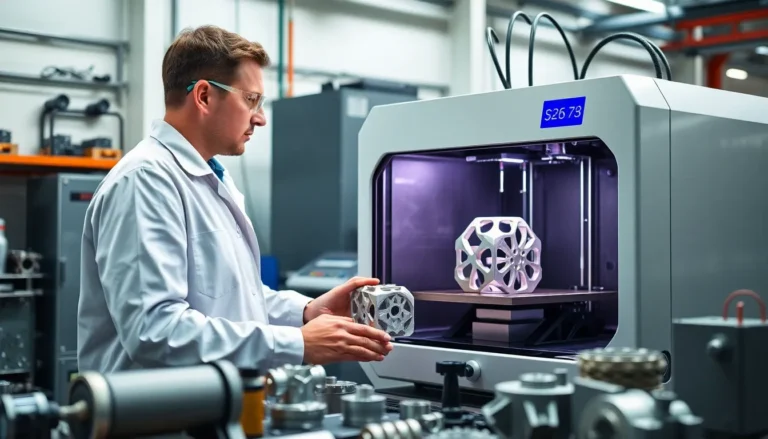Drones for children are more than just flying toys; they’re gateways to adventure and creativity. Imagine a world where kids can explore the skies, capture stunning aerial photos, or race against friends—all while honing their hand-eye coordination. With the right drone, children can unleash their inner pilot and embark on thrilling missions right from the backyard.
Table of Contents
ToggleWhat Are Drones for Children?
Drones for children are specifically designed aircraft that are easy to operate, safe, and feature user-friendly controls. They offer exciting opportunities for exploration with various models incorporating colorful designs and durable materials. Purpose-built for younger users, these drones often come equipped with added safety features like propeller guards and automatic landing functions.
Models designed for children typically include educational tools, which help teach concepts like physics and technology. Engaging in remote piloting enhances skills such as spatial awareness and critical thinking. Various manufacturers cater to this market, producing a range of sizes and functionalities that suit different age groups and experience levels.
Some popular features of children’s drones include built-in cameras for capturing moving images and videos, as well as programmable flight patterns. With the ability to perform tricks and maneuvers, these devices provide entertainment while stimulating creativity. Many children enjoy the thrill of racing drones with friends, fostering teamwork and social interaction.
Safety remains a paramount concern; hence, most drones for children operate at lower altitudes and feature lower speed limits. Regulations, such as height restrictions and required age limits, apply to these products to ensure responsible use. Users may also benefit from guidance on how to operate their drones effectively and ethically.
Availability varies widely based on features, price points, and brands, giving parents myriad choices. Overall, drones for children serve as a gateway to science, technology, engineering, and mathematics (STEM) learning while ensuring fun and adventure in outdoor activities.
Benefits of Drones for Children

Drones for children offer various benefits that extend beyond play. They provide opportunities for skills development and creativity.
Enhancing Creativity
Drones inspire kids to express their creativity. Young users can capture stunning aerial photos and videos, leading to innovative projects. Programming flight patterns allows children to design unique flight experiences. Engaging with drones can spark interest in technology and engineering. Many kids explore storytelling through photography, merging art with technology. Utilizing drones fuels creative thinking, transforming how children interact with their environment.
Encouraging Outdoor Play
Drones encourage children to embrace the outdoors. Flying drones often requires open spaces, prompting kids to explore parks and backyards. Fresh air and physical activity contribute to their overall health. Engaging with peers in friendly races stimulates social interaction. Children become more active when navigating their drones, enhancing coordination and teamwork skills. Outdoor play with drones provides a fun way to develop not only physical abilities but also an appreciation for nature.
Types of Drones for Children
Various drone types cater to children’s interests and skills. They provide exciting options for beginners and more advanced young pilots.
Toy Drones
Toy drones represent the most accessible entry point. Designed with simplicity, these drones often include straightforward controls. Many models feature colorful designs that appeal to younger users. Low altitudes and gentle speeds ensure safety during operation. Toy drones also incorporate crash-resistant materials, which enhance durability. Some versions even include built-in lights and sounds, making flying engaging. Kids can enjoy flying sessions in backyards or local parks, encouraging outdoor play while developing coordination.
Educational Drones
Educational drones integrate playful flying with learning opportunities. These drones often include programming features that allow children to create custom flight paths. Some models incorporate augmented reality experiences that teach coding basics. Ideally suited for STEM learning, educational drones foster critical thinking and problem-solving skills. Many options come with instructional materials or interactive applications, guiding users through complex concepts related to physics and aerodynamics. By combining fun with education, these drones create a balanced environment for growth, encouraging curiosity and exploration.
Safety Considerations for Kids
Safety considerations for kids operating drones remain critical. Drones for children typically include features that enhance safety, such as propeller guards and lightweight designs. Parents should check the product specifications, focusing on age recommendations to ensure appropriate use.
Supervision during drone flights is advisable. Staying within visual range prevents mishaps and encourages responsible flying. Certain models limit altitude and speed, enhancing safety for young users. Following local regulations helps maintain compliance while flying drones in parks or residential areas.
Training on basic drone controls promotes a better understanding of safe practices. Each child can benefit from learning pre-flight checks that ensure equipment functionality. Developing spatial awareness through practice builds confidence in flying abilities.
Choosing drones with a low battery alert system adds an extra layer of safety. Drones equipped with automatic landing protocols prevent crashes in low battery situations. It’s essential to teach kids to land the drone immediately when notified of low battery levels.
Educating children on respecting personal space and the privacy of others is crucial. Flying drones near crowds or private property raises safety and legal concerns. Clear guidelines provide a foundation for responsible drone operation.
Exploring open spaces is optimal for drone flights. These areas minimize the risk of collisions and provide plenty of room to maneuver. Staying away from obstacles, such as trees and buildings, ensures a safer flying experience.
Promoting the importance of safe drone operation influences a child’s overall experience. Regular discussions and hands-on activities cultivate a responsible flying culture. Involvement in local drone clubs or workshops offers further education and community support.
Drones for children offer a unique blend of fun and education that encourages exploration and creativity. They not only provide thrilling outdoor experiences but also foster essential skills like hand-eye coordination and critical thinking. With a variety of models available, parents can find the perfect fit for their child’s interests and abilities.
Safety features ensure that kids can enjoy flying while minimizing risks, making these devices a responsible choice for play. By engaging with drones, children can discover a passion for technology and nature, paving the way for future learning and adventure. Embracing this innovative tool can lead to a world of possibilities for young minds.





